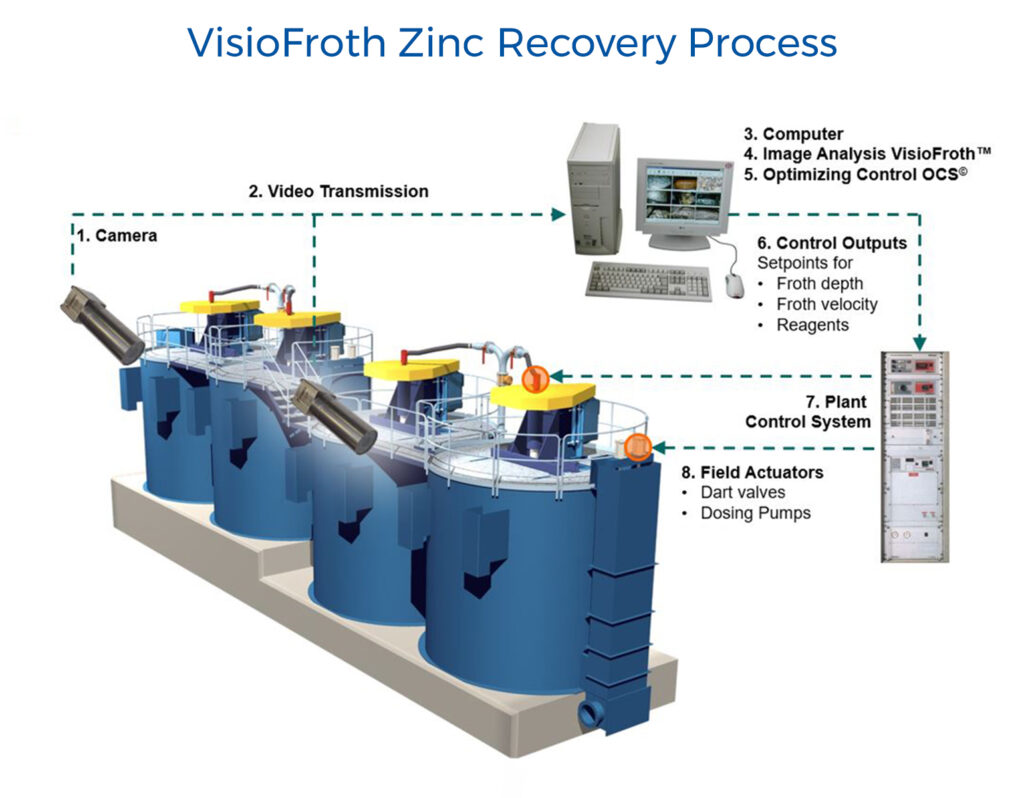VisioFroth Technology Increases Zinc Recovery
8 Jun 2021

Two of our seven core values are stewardship – conserving, managing and making the most of the natural resources in our care; and sustainability – balancing social, environmental and economic considerations with a relentless focus on improving our processes. The introduction of VisioFroth™ technology at one of our mills helps us deliver on both.
Doe Run primarily produces lead concentrates from our mines. However, galena, the mineral form of lead, is often co-located with zinc and copper mineralization. Zinc is well-known as an important dietary mineral, and it is also one of the most versatile metals known to mankind. Zinc is:
- Critical in modern technologies, such as lasers, satellites and electronic circuitry.
- Used to protect against rust and corrosion on thousands of products, from the world’s tallest skyscrapers to automobiles.
- Used in die casts, making it a part of nearly all manufactured products.
- Important in battery production.
In response to the ongoing drive for improved mineral recovery and return on investment, Doe Run piloted the VisioFroth technology in our zinc circuit at Brushy Creek in 2020.
“One thing is certain, the global economy needs zinc. By extracting more zinc from the earth’s minerals, we are making the most of the resources in our care while also meeting the global demand for zinc.”
Brad Bunn, senior metallurgical engineer at Brushy Creek Mill
Improving Zinc Recovery
During the milling process, ore is crushed and ground before proceeding to a flotation process, which separates the copper, zinc and lead. “In order to separate lead, zinc and copper from our ore, we use a series of flotation cells and different reagents to alternatively float or depress minerals,” stated Brad Bunn, senior metallurgical engineer at the Brushy Creek Mill. “The reagents allow selected minerals to attach to air bubbles, which are produced by the flotation machines. The mineral-coated bubbles flow out of the flotation cell and the minerals are recovered through a settling and filtration process.”
Designed to help mill operators maximize mineral recovery, the VisioFroth technology uses remote camera monitoring to capture images of the mineral froth as it moves through the concentrator cells. This digital data is then analyzed for froth velocity, color and texture; bubble size and distribution; and bubble stability versus collapse rate by VisioFroth software and immediately shared with the operator.

“VisioFroth provides us better visibility and analysis of the flotation process,” said Brad. “Combined with its software, it provides real-time data and notifies the operator if adjustments are necessary to achieve optimal recovery.”
No pilot program is without some challenges, which is why collaboration across teams is so important. Early in the process, we realized that we needed more consistent lighting in order to capture high quality images. The mill’s maintenance team fashioned a stainless steel hood on which to mount the VisioFroth camera. The hood provides consistent illumination and improved image quality.
Since the installation and commissioning of the technology, zinc recovery has improved significantly, and the consumption of copper solution required in the zinc circuit has dramatically declined, which saves in operating costs. We are evaluating adding VisioFroth technology to our other mills.


